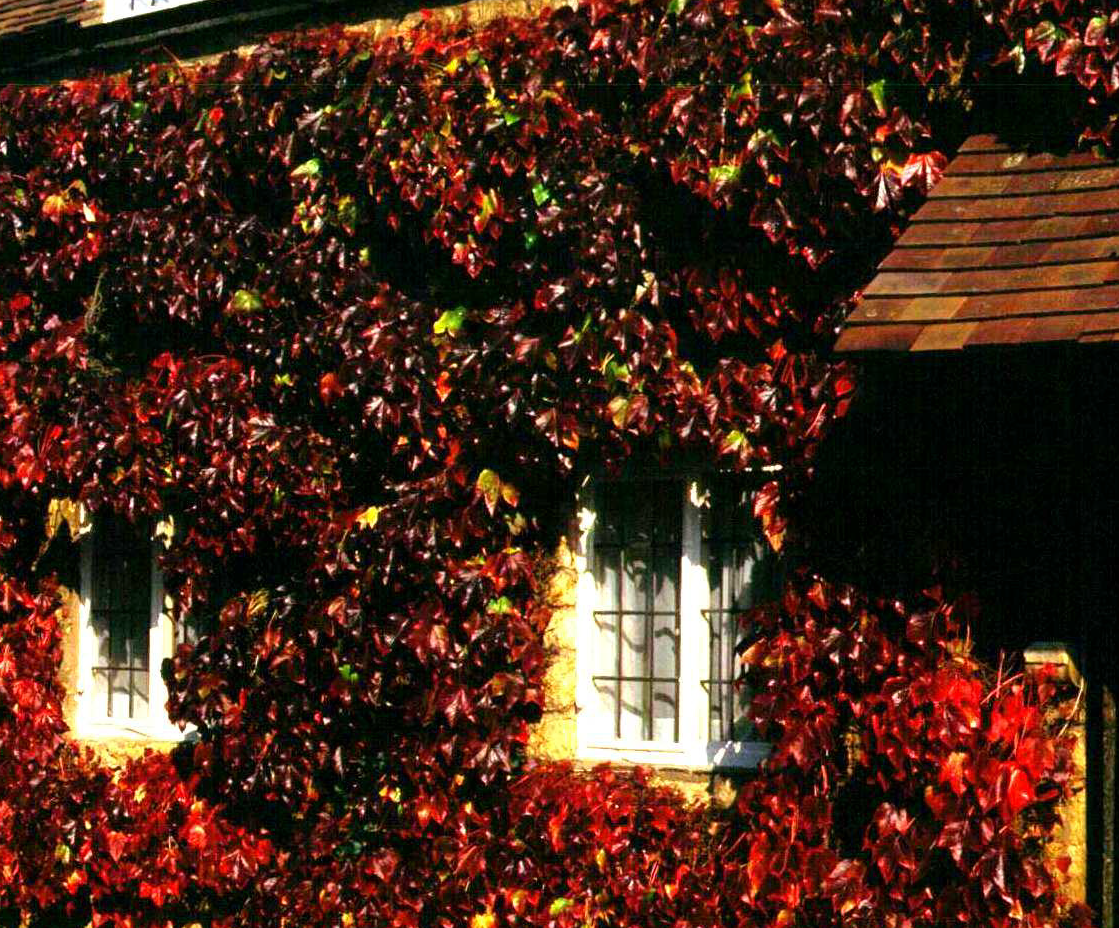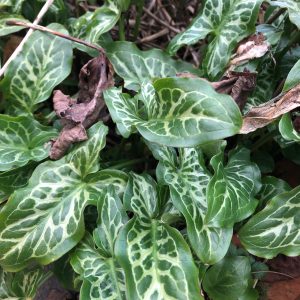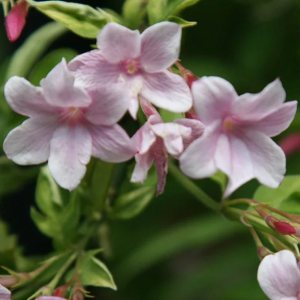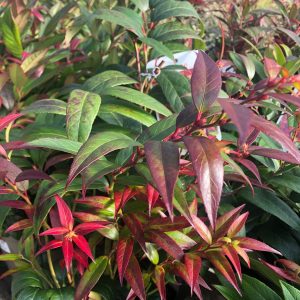Parthenocissus tricuspidata Veitchii
Boston Ivy
Parthenocissus tricuspidata Veitchii is a very vigorous, self-clinging large deciduous climber with a Spectacular Autumn colour.
Leaves mostly ovate or three-lobed, turning brilliant crimson and purple in autumn. Flowers inconspicuous; berries dull blue.
Height and Spread 20m. Plant in any aspect, even on a North wall. Harmful if eaten; skin irritant
More
A vigorous climber which has glossy, bright green foliage, which will quickly cover a large north or east-facing wall. Mature specimens also provide an important habitat for insects and small birds. But it needs plenty of space, no competition from other plants and regular pruning to keep it within bounds.
Some support may need to be provided until the plant is well established (this may take a couple of years). Once established, tie in stray shoots and prune in autumn or early winter to keep the plant within bounds, paying particular attention to stems that grow around windows, guttering or roofs.
Parthenocissus tricuspidata veitchii, commonly known as Boston ivy or Japanese ivy, is a climbing plant that belongs to the Vitaceae family. It is native to Japan, China, and Korea, and is widely cultivated in North America and Europe for its ornamental value. The plant has a number of distinctive features that make it popular among gardeners and homeowners, including its vigorous growth, attractive foliage, and ability to climb walls and other structures.
One of the most striking characteristics of Parthenocissus tricuspidata veitchii is its foliage. The leaves are deeply lobed and typically have three points, hence the plant’s scientific name. They are a glossy green color during the growing season, and turn to a rich shade of red in the fall. The leaves are arranged in an alternating pattern along the stem, giving the plant a full and bushy appearance.
In addition to its foliage, Parthenocissus tricuspidata veitchii is known for its climbing ability. The plant is a vigorous grower and can reach heights of up to 50 feet if left unchecked. It climbs by means of adhesive pads that form at the ends of its tendrils, which attach themselves to surfaces like walls, fences, and tree trunks. This makes the plant an excellent choice for covering unsightly structures or creating a living green wall.
Another advantage of Parthenocissus tricuspidata veitchii is its hardiness. The plant is able to tolerate a wide range of growing conditions, from full sun to partial shade, and can grow in a variety of soil types. It is also resistant to pests and diseases, making it a low-maintenance option for gardeners.
Despite its many positive qualities, Parthenocissus tricuspidata veitchii is not without its drawbacks. One of the main issues with the plant is its invasive nature. It can quickly spread and overtake other plants. It is important to keep the plant under control and prevent it from spreading beyond its intended area.
The plant’s adhesive pads can be very strong and difficult to remove, which can cause damage to walls and other surfaces. This can be a concern for homeowners who are considering using the plant to cover their home’s exterior. To prevent damage, it is important to regularly prune the plant and remove any tendrils that are growing in unwanted areas.
Despite these potential issues, Parthenocissus tricuspidata veitchii remains a popular choice for many gardeners and homeowners. Its attractive foliage and climbing ability make it a versatile plant that can be used in a variety of settings. With proper care and maintenance, it can be a valuable addition to any garden or landscape.







Reviews
There are no reviews yet.